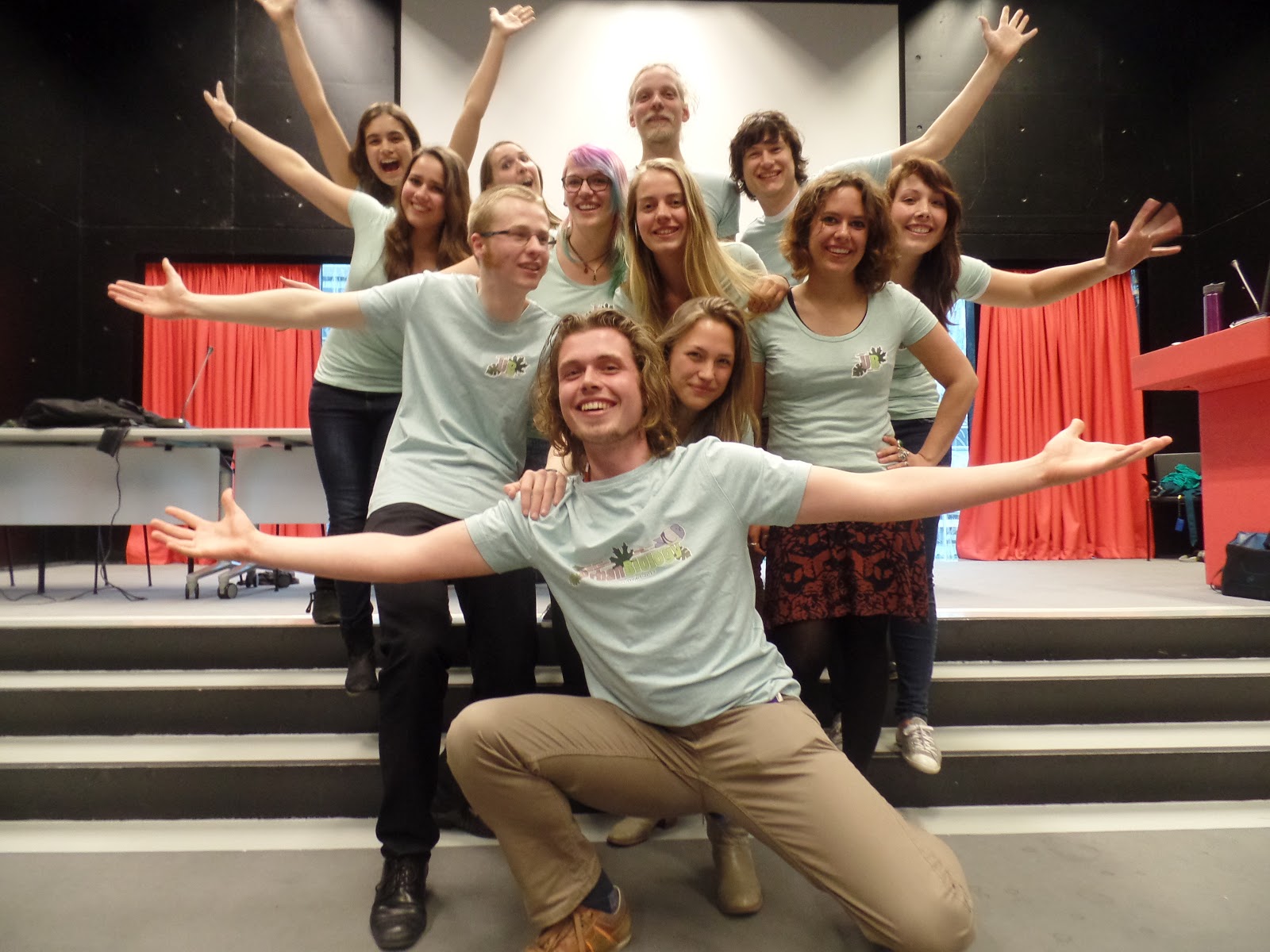
About the project
Well, what about it? We wrote some amazing articles, we catered to your every need with films of utmost quality, and yet, here you are, whiling away both your and our time. Well, you're here now, so we may as well begin, but don't you think for a second that this is what we envisioned for you:
We are twelve Biology students in the second year of our Bachelor's degree. For our Honours Programme, we were given the time and the means to pursue a project related to biology as we envisioned it. But what subject to choose in a group with such a diverse array of interests? What hidden facet of biology could we find that would satisfy the public and ourselves? The answer, in fact, is all around us: the city.
The city is bursting at the seams with biology. It is, we believe, much more interesting than the meadow that Stereotypical Biologist was visiting. In the city, organisms need to adapt to rapidly changing conditions. In the city, we use all facets of biology to inspire us and to help us tackle difficult problems. In the city, we find Urban Biology. Follow us...
We see a haze of white. We dive in. The clouds part. Oceans. A landmass. A meadow. And who do we see trudging through the grass in wonderment? That's right, it's Stereotypical Biologist! 'Oh, what wonderful plants are these!', exclaims Stereotypical, 'What pristine natural beauty that my eyes behold.'. It is at about this point, and we do apologise for this, that Stereotypical Biologist will crouch down, take out her magnifying glass, and stare at some bugs while mouthing arcane names such as Psyllobora vigintiduopunctata, which sounds like something from Harry Potter, but isn't quite as exciting, really.
Let us now move away somewhat from Stereotypical, and take a sharp right into the Real World. What do we see? A cityscape. Cars, fumes, noise, pigeons. And, yes, we see lots of evidence that the pigeons in question have a digestive system that functions just fine. Very fine, in fact. It seems to have functioned all over the pavement, buildings, and yes, even the statues of decorated war heroes. But what we also see is biology.
Zoom back out, see Mr. Important Business man pulling on the leash of his dog, while the dog is slowly sculpting one rather fetching excrement. Such a masterpiece takes time, the dog seems to indicate. Time is money, the man seems to indicate. It is a faecal face-down the like of which has never been seen before. But now, a third player enters the plot. He is one of the twelve chosen Bachelor's Students of Biology.
'Welcome', he intones, 'to the wonders of Urban Biology. We tend to think of the city as the polar opposite of nature, but nothing is farther from the truth. Nature and biology abound in the city. At the beginning of the year, we were sent forth on a quest to complete a project. The ones who came before us wrote a book, the ones before those wrote a book, heck, it seems books are all the rage nowadays. But we were to revolutionise the Honours Programme. A website, articles, short films, everything would be different. Endless glory awaited, and so, we set forth and..' *splat*. It is at this point that the biologist has trodden in the dog poop. It happens to the best of us. Let us take over while he rushes off to find a stick:
Now, you found us, and found out all about us, so why not find out all about Urban Biology by reading the articles, watching the video's, and feeding pigeons to watch their digestive systems in full swing? Enjoy!

Lotte Pronk, Rian Stoffelen, Anne Snijders, Michelle Heuvelmans, Louise Franssen, Jessy Hollander, Wendy Lichtenauer, Hylke Kortenbosch, Jonas Jonkers, Sanne van Kuijk, Dieter Stoker and Timo v. Eldijk.


